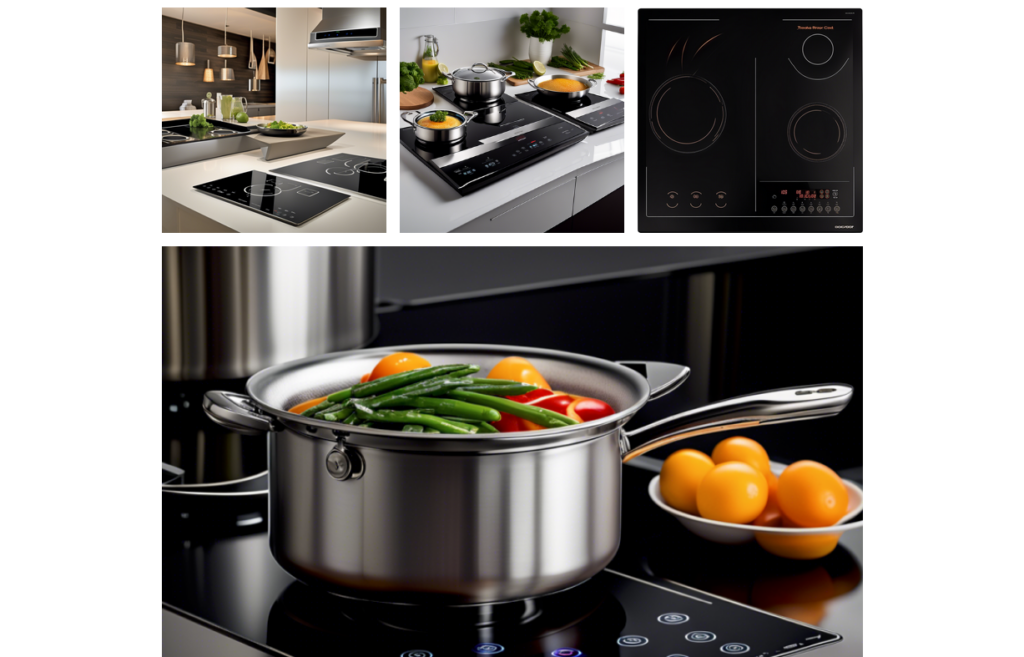In the race towards energy efficiency, induction cooktops have emerged as a frontrunner. But, as with any technological advance, there are questions – primarily, are induction cooktops safe? Do they emit any harmful radiations? Today, we’ll dive into the world of induction cooktops, understanding their functionality, benefits, and most importantly, their relationship with electromagnetic field (EMF) radiation.
Short Summary
- Understanding induction cooktops involves exploring safety, EMFs and potential risks for people with pacemakers.
- Induction cooking offers numerous advantages such as energy efficiency and precision. Exposure to EMF radiation should be considered.
- Steps can be taken to reduce exposure including choosing appropriate cookware, maximizing distance from the cooktop and using shielding solutions.
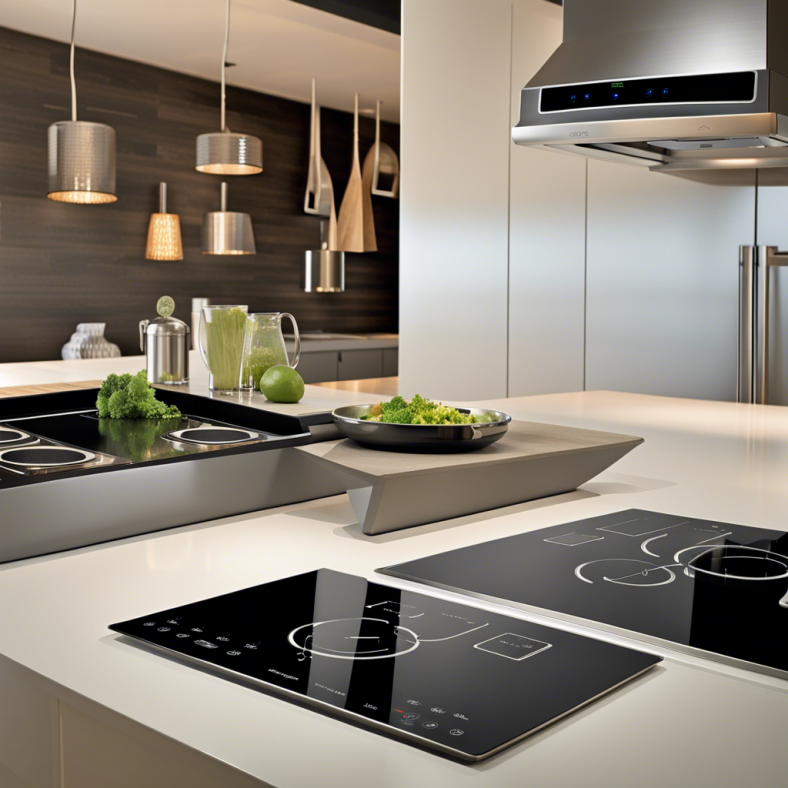
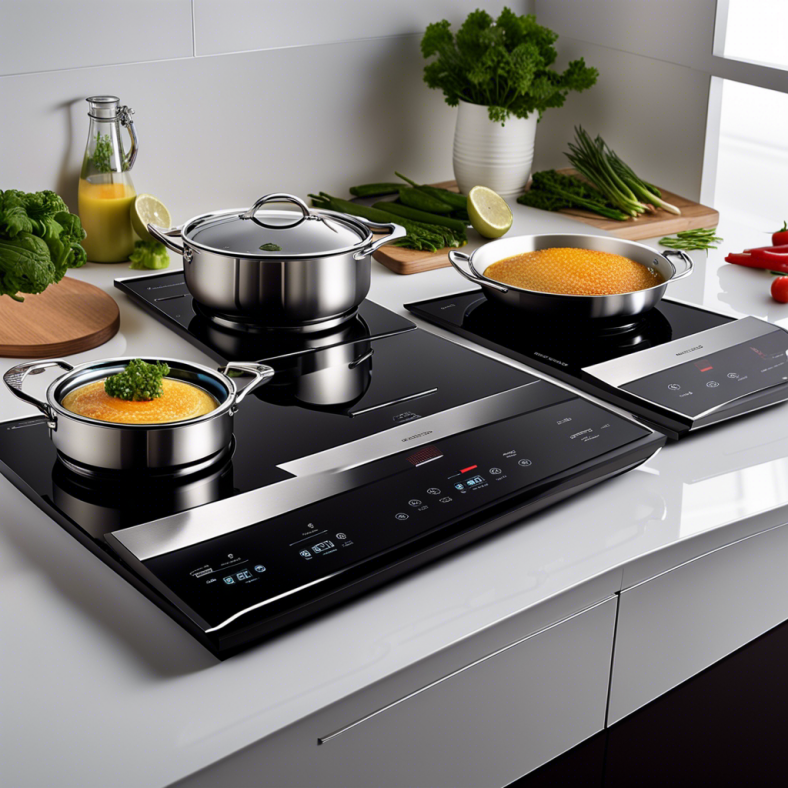
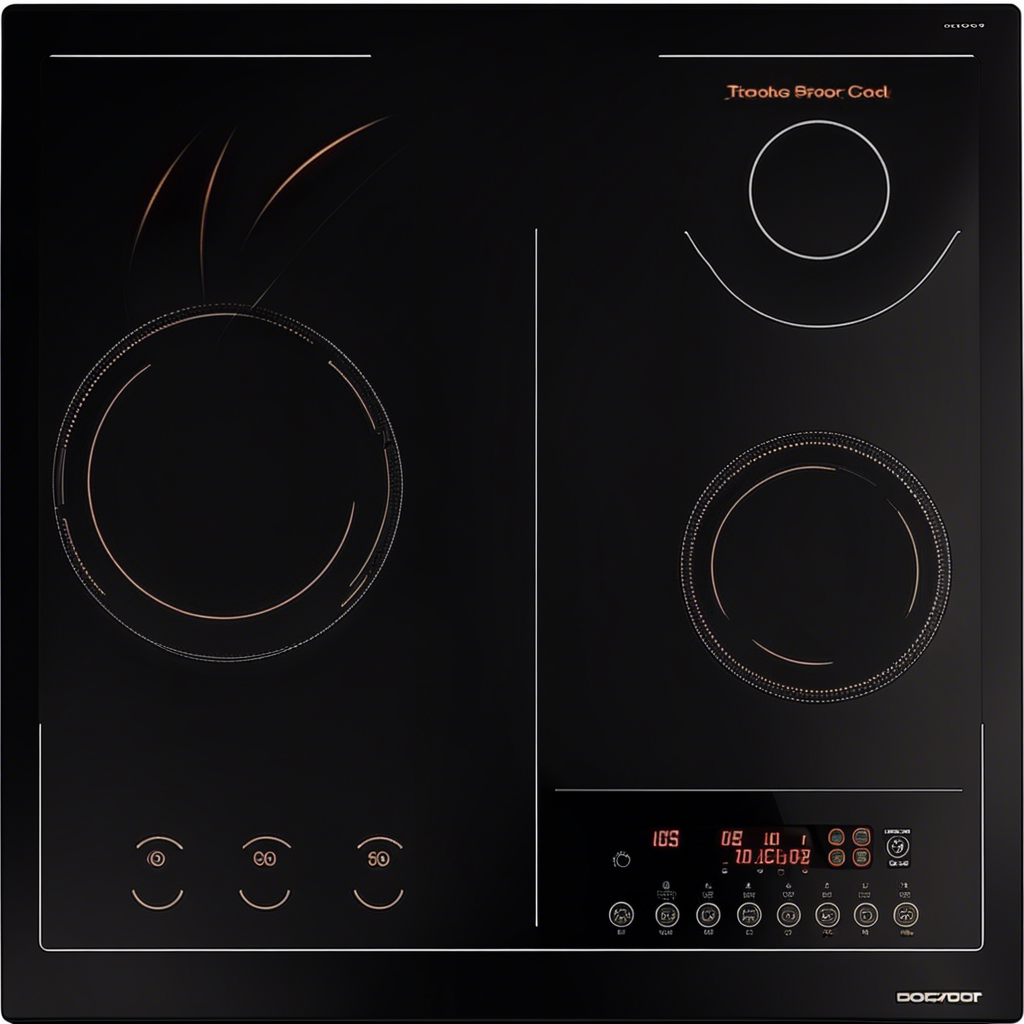
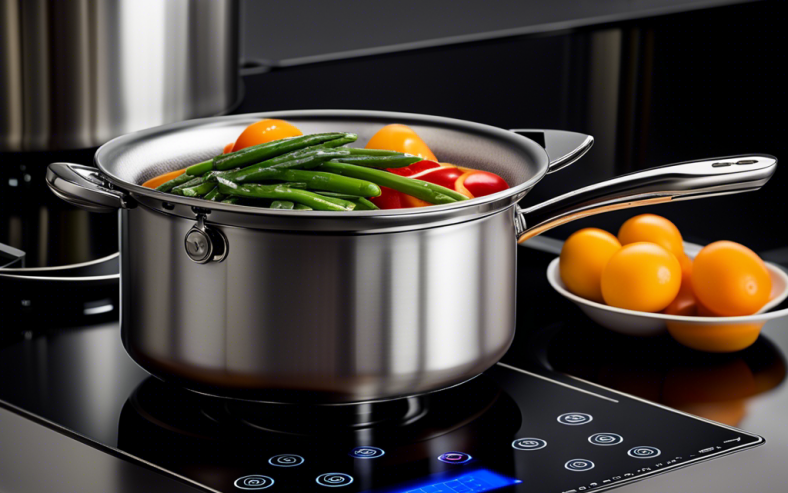
Understanding Induction Cooktops
Induction cooktops, with their sleek design and advanced technology, are increasingly finding a place in modern kitchens. Unlike conventional gas stoves, induction stovetops use electromagnetic fields to heat up your food. But the question arises – are induction cooktops safe? The short answer is yes. For years, induction technology has stood the test of time and scrutiny, posing no known hazards. Understanding how induction cooktops work can further alleviate any concerns about their safety.
The induction burner is safe as it only heats the cookware, leaving the surrounding area cool. However, induction stoves generate electromagnetic fields (EMFs), a fact that has raised eyebrows and concerns about possible health risks. It’s important to note that while induction cooktops, including the induction stove, do emit EMF radiation, there is no definitive evidence that they pose any greater risk than other household technologies.
People with pacemakers, however, need to be cautious. The magnetic fields generated by induction cooktops could potentially interfere with the functioning of pacemakers and insulin pumps. Hence, it is advisable for people with such medical devices to consult with their doctor before using an induction range.
Now that we’ve addressed the elephant in the room, let’s delve deeper into the world of induction cooking. Let’s understand how it works, its benefits, and the best ways to mitigate any potential risks.
How Induction Cooking Works
Induction cooking is a revolution in the culinary world. But how does it work? The key lies in the term ‘induction’, which in this context refers to the generation of heat using magnetic fields. When you turn on an induction cooktop, an electric current flows through a coil, creating a magnetic field. This magnetic field induces an electric current in the cookware placed on the cooktop, generating heat.
The type of cookware you use on an induction cooktop plays a crucial role in how efficiently it works. The cookware must be made of a material that can respond to the magnetic field and help convert it into heat. This explains why not all types of cookware are compatible with induction cooktops.
The heat generated in the cookware is then used to cook the food. Meanwhile, the induction cooktop remains cool as it does not generate heat directly. This is one of the main reasons why induction cooktops are considered safer than traditional gas or electric cooktops.
So, how does all of this relate to EMF radiation? As we’ve seen, the process of induction cooking involves the generation of a magnetic field through electromagnetic induction. This magnetic field is the source of the EMF radiation emitted by induction cooktops.
Benefits of Induction Cooking
The marvel of induction cooking isn’t just about its innovative working mechanism. It’s also about the numerous benefits it offers over traditional cooking methods. One of the most notable advantages of induction cooking is its energy efficiency. Unlike traditional gas or electric cooktops, induction cooktops heat the cookware directly, rather than heating the air around it. This direct transfer of heat reduces energy wastage during the cooking process, making induction cooking a more efficient option.
Induction cooking is also renowned for its precision. Unlike traditional cooking methods, where the flame or heat settings can fluctuate, induction cooktops offer accurate temperature control within the cooking zone. This precision ensures that the food is cooked evenly and consistently, yielding the same delicious results every time.
When it comes to cleaning, induction cooktops are a dream come true. Unlike gas or electric cooktops that can get extremely hot, induction cooktops remain relatively cool. This significantly reduces the chances of spills and splatters getting burned onto the surface, making the cleaning process much simpler and quicker.
While the benefits of induction cooking are undeniable, the concern around EMF radiation remains. So let’s take a closer look at EMF radiation, how it’s related to induction cooking, and the potential risks it may pose.
EMF Radiation and Induction Cooktops
EMF radiation and induction cooktops – two terms that have become almost inseparable in recent years. But what is the correlation, and why is it a cause for concern? Induction cooktops, like many other electrical devices, generate EMF radiation. The question is – are they a potential source of harmful EMF radiation exposure?
EMF radiation, also known as electromagnetic radiation, is a type of energy emitted by electrical devices, including induction cooktops. This induction cooktop electromagnetic radiation is generated when the cooktop is in use, with the levels of radiation varying depending on factors like the type of cookware used and the distance from the cooktop.
While the potential risks of EMF radiation have been a topic of debate, there is no definitive evidence to suggest that the radiation emitted by electrical devices, including induction cooktops, has any long-term detrimental effects. However, there is a possibility that induction cooktops may interfere with pacemakers or insulin pumps if they are within an inch or two of the burner.
To better understand the potential risks and safety concerns associated with EMF radiation from induction cooktops, let’s delve deeper into what EMF radiation is, and how it can affect our bodies.
What is EMF Radiation?
EMF radiation is a form of energy that’s emitted by electrical devices, including induction cooktops. When we talk about EMF radiation, we’re essentially referring to electric and magnetic fields. Electric fields are generated by differences in voltage and exist wherever there’s a positive or negative electrical charge. On the other hand, magnetic fields are produced when an electric current flows, only occurring when a device is switched on and the current is flowing.
EMF radiation isn’t just emitted by man-made devices; it also originates from natural sources including the atmosphere, the earth, and even the sun. However, the EMF radiation we’re concerned about in this context is the one emitted by induction cooktops.
So, how do induction cooktops emit EMF radiation, and is this radiation something to be concerned about? Let’s explore.
Induction Cooktops and EMF Emissions
While the benefits of induction cooking are many, it’s important to note that induction cooktops emit radiation in the form of EMF radiation. This radiation is generated when the cooktop is in use, with the levels of radiation varying depending on factors like the type of cookware used and the distance from the cooktop.
Not all cookware is created equal, and the type of cookware you use on an induction cooktop can affect the amount of EMF radiation emitted. Pots and pans must be made of ferromagnetic materials such as iron. These materials should have magnetic properties to ensure their effectiveness.
Another factor that can affect the amount of EMF radiation emitted is the distance from the cooktop. The closer you are to the cooktop, the higher the levels of EMF radiation you’re likely to be exposed to.
While this may sound concerning, it’s important to remember that EMF radiation is everywhere, and induction cooktops are just one of many sources. However, it’s always better to be safe than sorry. So, what can we do to reduce our exposure to EMF radiation when using an induction cooktop?
Safety Concerns and Health Risks
As we’ve seen, induction cooktops emit EMF radiation, which has led to concerns about potential health risks. However, it’s important to note that EMF radiation is a type of non-ionizing radiation, which means it doesn’t have enough energy to ionize atoms or molecules and cause damage to human tissue. That said, exposure to high levels of EMF radiation has been associated with health issues such as nerve and tissue damage, changes in neurotransmitters, and potential links to cancer.
It’s also important to note that exposure to EMF may interfere with pacemakers, potentially resulting in malfunction or cessation of function. However, at this time, there is no definitive evidence to suggest that the levels of EMF radiation emitted by induction cooktops are harmful. The World Health Organization’s International Agency for Research on Cancer (IARC) has classified EMF radiation as a ‘possible carcinogen’, which means it could potentially cause cancer, but more research is needed to confirm this.
But while the jury is still out on the potential health risks, there are steps you can take to minimize your exposure to EMF radiation when using an induction cooktop. Let’s take a look.
Exposure Limits and Guidelines
When it comes to EMF radiation, there are certain exposure limits and guidelines that have been established by international organizations. The International Commission on Non-Ionizing Radiation Protection (ICNIRP) is one such organization. It provides guidelines to determine acceptable levels of electromagnetic field (EMF) emitted from electronic devices and electrical appliances. However, research indicates that some induction cooktops have EMF emissions that exceed these guidelines. For instance, a study conducted by a research group in Switzerland found that most induction cooktops exceeded the 1998 maximum exposure levels set by the ICNIRP when an individual was standing close to the stove.
Powerwatch UK, a leading consumer rights organization, also noted that when using a magnetic induction hob, the exposure of hands and arms surpasses the normal ICNIRP levels, which guard against severe acute effects. Induction hobs work at 20 kHz frequency. This allows them to generate magnetic fields that are up to 3 times higher than ICNIRP levels.
While these findings may seem alarming, it’s important to note that it’s exceedingly rare for any home appliances to operate outside of these guidelines. However, it’s always a good idea to be aware of these limits and to take steps to reduce your exposure to EMF radiation.
Potential Health Effects
As mentioned earlier, exposure to EMF radiation has been associated with a range of health issues. These include nerve and tissue damage, alterations in neurotransmitters, and potential links to cancer. However, it’s important to note that these potential health effects are based on exposure to high levels of EMF radiation. At present, no studies have conclusively demonstrated a causal relationship between ELF magnetic fields and cancer. The International Agency for Research on Cancer (IARC) has classified ELF magnetic fields as a 2B carcinogen, meaning they are possibly carcinogenic to humans. This classification is based on an increased risk for childhood leukemia with exposure to high levels of ELF magnetic fields.
Research has also revealed that EMF radiation can have a range of effects on the central nervous system. However, the exact nature and extent of these effects are still not fully understood and more research is needed to draw concrete conclusions.
While the potential health effects of EMF radiation are a legitimate concern, it’s important to remember that the levels of EMF radiation emitted by induction cooktops are typically within the safe limits set by international guidelines. Induction cooktops emit EMF radiation, so it is important to take extra precautions. There are several methods to reduce your exposure even further.
Reducing EMF Exposure While Using Induction Cooktops
While the levels of EMF radiation emitted by induction cooktops are generally within safe limits, it’s always a good idea to take steps to further reduce your exposure. There are several ways to do this, including choosing the right cookware, maximizing your distance from the cooktop, and using EMF shielding solutions.
Selecting appropriate cookware can make a big difference when it comes to reducing EMF exposure. Cookware made of ferromagnetic materials, such as cast iron or steel, can help reduce the amount of EMF radiation emitted by the cooktop.
Maximizing your distance from the cooktop can also help reduce your exposure to EMF radiation. This can be as simple as using the back burners of the cooktop, or standing a little further away while cooking.
Finally, using EMF shielding solutions can provide an extra layer of protection. These solutions, which include protective mats and barriers, can help block or reduce the amount of EMF radiation that reaches you.
Choosing the Right Cookware
Choosing the right cookware for induction cooking can significantly reduce your exposure to EMF radiation. Cookware made of magnetic materials such as cast iron, steel, some enamelled steel, and stainless steel pans with an iron base or core are the most suitable options for induction cooktops. It’s important to note that certain types of cookware are not recommended for use with induction cooktops. Glass, aluminum, and copper pans, for example, are not compatible with induction cooktops and can increase the amount of EMF radiation emitted.
Selecting cookware that is ferromagnetic in nature can help reduce electromagnetic field (EMF) radiation exposure. This is because these materials respond well to the magnetic field generated by the cooktop, helping to convert it more efficiently into heat.
By choosing the right cookware, you can not only reduce your exposure to EMF radiation, but also ensure that your induction cooktop operates more efficiently and effectively.
Maximizing Distance and Cooktop Placement
Another effective way to reduce your exposure to EMF radiation when using an induction cooktop is to maximize your distance from the cooktop. The further away you are from the source of EMF radiation, the lower your exposure will be. One simple way to do this is to use the back burners of the cooktop whenever possible. This naturally puts more distance between you and the cooktop, helping to reduce your exposure to EMF radiation.
Another strategy is to stand a little further back from the cooktop while cooking. While this may not always be practical, every little bit helps when it comes to reducing your exposure to EMF radiation. It’s also a good idea to avoid leaning over the cooktop while it’s in use. This not only reduces your exposure to EMF radiation, but also helps to prevent burns from steam or hot cookware.
EMF Shielding Solutions
If you’re concerned about your exposure to EMF radiation when using an induction cooktop, you may want to consider using an EMF shielding solution. These solutions, which include protective mats and barriers, can help block or reduce the amount of EMF radiation that reaches you. EMF shielding solutions work by blocking or reflecting EMF radiation, thereby reducing the amount of radiation that reaches you. They can provide an extra layer of protection, particularly if you use your induction cooktop frequently or for long periods of time.
There is a wide range of EMF shielding products available on the market, including mats, clothing, and paint. These products are designed to increase your protection against EMF radiation, and can be particularly beneficial for those who are sensitive to EMF.
While EMF shielding solutions can provide additional protection, it’s important to remember that they are not a substitute for the other safety measures we’ve discussed. Choosing the right cookware, maximizing your distance from the cooktop, and using the back burner whenever possible are all crucial steps in reducing your exposure to EMF radiation.
Alternatives to Induction Cooking
While induction cooking offers many benefits, it’s not the only option available. If you’re concerned about the potential health risks associated with EMF radiation, you may want to consider some alternatives to induction cooking. Gas and propane cooktops, for example, do not generate EMF radiation and can be a safe alternative to induction cooktops. They offer many of the same benefits as induction cooktops, including precise temperature control and quick heating times, without the potential risks associated with EMF radiation.
Infrared cooktops are another viable alternative. They use infrared technology to heat the cookware, making them a good choice for those who are chemically sensitive. Plus, they don’t require specialized cookware, which can make them more convenient to use.
Regardless of which type of cooktop you choose, it’s important to be aware of the potential health risks and to take steps to reduce your exposure to EMF radiation. This could include using appropriate cookware, maintaining a safe distance from the cooktop, and making use of EMF shielding solutions.
Summary
In conclusion, while induction cooktops do emit EMF radiation, the levels are generally within the safe limits set by international guidelines. However, being aware of the potential risks and taking steps to minimize your exposure can help ensure that you can enjoy the benefits of induction cooking without undue worry. Remember, the key is to be informed, be cautious, and above all, be safe.
Frequently Asked Questions
Are induction cooktops safe for health?
Induction cooktops are safe for health as they do not emit any harmful radiation; the electromagnetic fields used to heat pans are non-ionizing and harmless.
Rest assured that induction stoves will not cause any damage to your DNA or cells.
Are induction stoves safer than electric?
Induction stoves are generally considered to be faster, safer, and more energy efficient than electric stoves, making them a better option for cooking.
They heat up quickly and evenly, and they don’t require a flame or open heat source, so they are much safer to use. They also use less energy than electric stoves, making them more cost-effective.
How does induction cooking work?
Induction cooking uses an electromagnetic field to create heat in the cookware, resulting in a rapid and efficient heating process.
What are the benefits of induction cooking?
Induction cooking provides an energy-efficient way to cook with precise temperature control, plus it makes cleanup a breeze.
What are the potential health risks of EMF radiation from induction cooktops?
High levels of EMF radiation from induction cooktops have been linked to nerve and tissue damage, changes in neurotransmitters, and possible cancer connections; however, more research is needed to confirm these potential health risks.
The World Health Organization has identified EMF radiation as a possible carcinogen, and the International Agency for Research on Cancer has classified it as a Group 2B carcinogen, meaning it is possibly carcinogenic to humans.
Given the potential health risks associated with EMF radiation, it is important to consider the potential health risks associated with EMF radiation.

